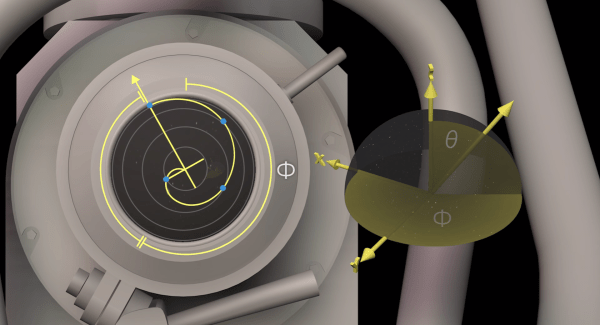The Apollo program is a constant reminder that we just don’t need so much to get the job done. Sure it’s easier with today’s tools, but hard work can do it too. [Bill Hammack] elaborates on one such piece of engineering: The Alignment Optical Telescope.
The telescope was used to find the position of the Lunar Module in space so that its guidance computer could do the calculations needed to bring the module home. It does this using techniques that we’ve been using for centuries on land and still use today in space; although now it’s done with computer vision. It was used to align the craft to the stars. NASA used stars as the fixed reference points for the coordinate system used to locate objects in space. But how was this accomplished with great precision?
The alignment optical telescope did this by measuring two unknowns needed by the guidance computer. The astronaut would find the first value by pointing the telescope in the general area necessary to establish a reading, then rotate the first reticle (a horizontal line) on the telescope until it touched the correct star. A ring assembly was then adjusted, moving an Archimedes spiral etched onto the viewfinder. When the spiral touches the star you can read the second value, established by how far the ring has been rotated.
If you’ve ever seen the Lunar Module in person, your first impression might be to giggle a bit at how crude it is. The truth is that much of that crudeness was hard fought to achieve. They needed the simplest, lightest, and most reliable assembly the world had ever constructed. As [Bill Hammack] states at the end of the video, breaking the complicated tool usually used into two simple dials is an amazing engineering achievement.












